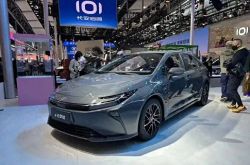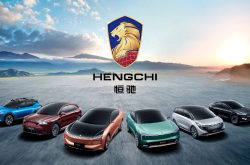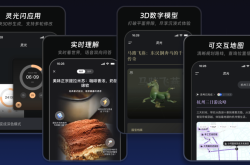Pinduoduo, the Wall-Breaker: Where Will Hundreds of Billions in Support Flow?
![]() 11/25 2025
11/25 2025
![]() 535
535

At age 10, Pinduoduo has consistently been a disruptor, creating countless innovations that have reshaped China's e-commerce rules. Now, with a staggering 100-billion-yuan bet, what future is Pinduoduo wagering on?
Written by | Landong Business, Yu Weilin
"Unlocking Imagination" – The Key Breakthrough for Brands to Move from Predicaments to Renewal.
Founded in 1932, Lego faced a severe financial crisis in 2003. Its survival hinged on a shift from "excluding adults" to "embracing adults." Today, Lego has transcended its definition as a mere "children's toy," becoming a lifestyle vehicle for self-expression and stress relief across age groups, inching closer to its goal of becoming a "century-old brand."
This "imagination revolution" is now unfolding among countless industrial belt brands. For instance, if adults can enjoy Lego, why can't children go fishing?
Over the past three years, China's parent-child fishing market has surged by 300%. Among 140 million active anglers, those aged 24 and under account for over 22% – turning fishing, once a pastime for middle-aged men, into a nationwide phenomenon with the rise of "micro-fishing."
Emerging brands in Weihai's fishing gear industrial belt have seized this opportunity: targeting young consumers and families, they've launched lightweight, stylish, and cost-effective lures. One brand, after just a year on Pinduoduo, surpassed 2 million yuan ($274,000) in single-store GMV, achieving a perfect "audience breakthrough."
If potatoes are of high quality and abundant, why must they rot in the ground? Why not process them into chips and sell nationwide?
In Zhaotong, Yunnan, a potato chip company confined to the region for 28 years is now breaking free. Supported by Pinduoduo's "Great Local Specialties" program, it's capturing young hearts with new products, overcoming geographical limitations, and going national – achieving a "spatial breakthrough."
If one must own a down jacket, why only buy it in winter?
In Pinghu, the "down jacket capital," factories mostly OEM for international brands, facing stark seasonal cycles – busy in winter, idle in summer. Leveraging Pinduoduo's traffic and data, they've developed lightweight down jackets and inner layers suitable for all seasons, turning "seasonal limits" into "year-round bestsellers" – achieving a "temporal breakthrough."
Behind the "imagination revolution" in industrial belts lies Pinduoduo's precise empowerment through its 100-billion-yuan support plan. Starting in April, Pinduoduo plans to invest over 100 billion yuan in traffic and resources over three years to drive high-quality merchant growth. In just six months, this has triggered a seismic shift on the supply side.
At age 10, Pinduoduo has consistently been a disruptor, creating countless innovations that have reshaped China's e-commerce rules. Now, with a staggering 100-billion-yuan bet, what future is Pinduoduo wagering on?
Where Will the 100 Billion Flow?
The 100-billion-yuan support acts as a vast reservoir, divided into three precise streams.
As Pinduoduo's home turf, agricultural product promotion is the first stream. Through its "Great Local Specialties" program, dedicated teams dive deep into major agricultural regions like Zhoushan, Zhejiang; Xiantao, Hubei; and Pu'er, Yunnan, customizing development paths, providing brand incubation, and subsidizing production-marketing links for feature (local specialties). According to the 2025 Agricultural Product Promotion Mid-Year Report, platform sales surged by over 47% year-on-year in the first half of the year.
The second stream continues last August's "Innovative Merchant Support Program" and "10-Billion Relief," addressing pain points in industrial belts like homogenization, lack of brands, and R&D shortages. It provides full-chain support for product R&D, marketing, and supply chain optimization through "innovative supply" initiatives.
By the third quarter of this year, the program had penetrated dozens of industrial belts, including Huizhou snacks, Foshan children's wear, and Shaodong luggage. According to the Innovative Supply One-Year Development Report, high-quality product SKUs grew by over 50% year-on-year.
The third stream surges toward the "E-Commerce Expansion West" plan, broadening consumer access through logistics relief. Since last September, Pinduoduo has waived logistics transfer fees in Western regions like Qinghai, Gansu, and Tibet, and added transfer hubs in Northeast China. With the 100-billion support intensifying, more remote areas are joining the "free shipping zone," with logistics times shrinking from over five days to within three.
Logistics improvements directly drove supply-demand growth: in the past year, platform orders in Western China surged by over 40%, with daily necessities doubling and trendy toy orders jumping by over 60%. On the supply side, by the second quarter of 2025, the program covered over 200 prefecture-level cities nationwide, boosting Western merchant numbers by 37% and orders by over 40% year-on-year.
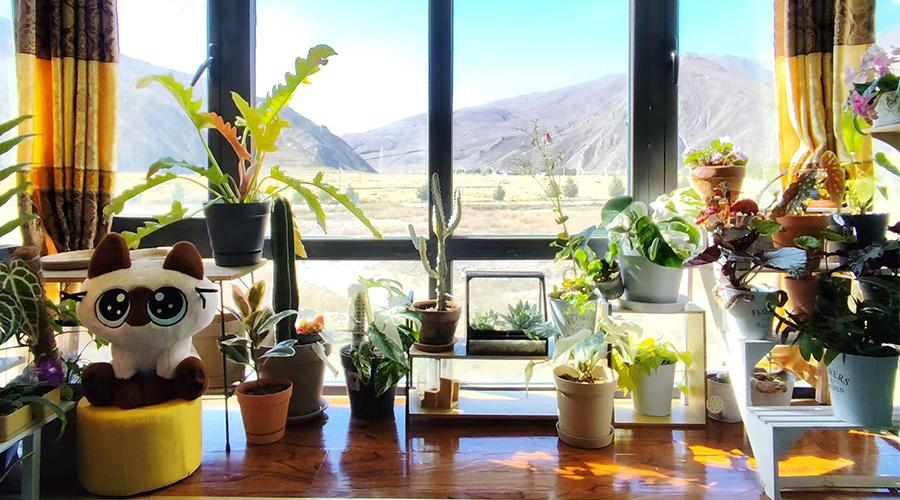
Pinduoduo's free shipping policy lets flower enthusiasts in Xigaze cultivate their own "Monet Gardens." Photo provided by interviewee.
The intense 100-billion investment has flooded the downstream supply side but also pressured the upstream. On November 18, Pinduoduo released its Q3 earnings, showing revenue growth slowing to a near-record low of 9%, a sharp deceleration from last year's 44%, with operating profit growth dropping to 1%.
However, Pinduoduo's management anticipated this outcome. At the Q3 earnings call, co-CEO Zhao Jiazhen stated, "We choose a long-term perspective on competition, proactively increasing investment even if it means sacrificing short-term profits to create more possibilities for the ecosystem's healthy growth and future."
This pre-announced long-termism has won external recognition. Digital economy expert Hu Qimu commented, "E-commerce platforms are evolving from transaction intermediaries to innovation engines, redefining China's manufacturing competitiveness." Moreover, after the Q3 earnings release, international investment banks like Citi and Daiwa upgraded Pinduoduo's ratings and target prices.
In the classic anime "One Piece," Shanks responds to questions about his lost left arm by saying, "I bet it on the new era." Pinduoduo's seemingly clumsy "heavy investment" choice in its 100-billion support is no different – a bet on the next round of e-commerce competition. When traffic competition peaks, deep supply-side empowerment will unlock new imaginative frontiers.
New Products, New Stories, New Merchants: The "Blood Transfusion" Leap of Industrial Belts
The answers lie in the "blood transfusion" leaps across industrial belts – new products, new stories, and new merchants are reshaping China's manufacturing competitiveness.
The farmgate purchase price of potatoes ranges from 0.6 to 1.2 yuan per jin, but processing them into chips raises the price to 28–40 yuan per jin. Selling potatoes but not as mere potatoes – upgrading from "raw materials" to "commodities" is the first hurdle for industrial belt brands.
In 1996, Li Bin quit his stable job to open Yunnan's first potato chip factory in Zhaotong, founding the "Lumila" brand. He and his workers manually peeled, sliced, and fried potatoes, with salespeople biking across towns to distribute 1-yuan bags to local stores.
But this was far from enough. Relying solely on offline distribution, Lumila remained confined to Yunnan and Guizhou for 28 years. New channels and products were essential for going national. In 2019, Lumila joined Pinduoduo and other e-commerce platforms. By 2025, leveraging platform sales data, it launched innovative flavors like coriander and fish mint. Supported by Pinduoduo's traffic tilt (tilt) and brand subsidies through "Great Local Specialties," it quickly gained traction, even introducing international advanced equipment for fully automated 3-minute potato-to-chip processing.
Today, Lumila boasts over 51,000 fans on Pinduoduo, with a 97%+ approval rating and a 38% repurchase rate. After joining Pinduoduo's "10-Billion Subsidy" program, platform sales doubled. The "locally grown" potato has transformed into a trendy brand.
Similarly inspiring stories unfold in Weihai, Shandong, the world's largest fishing gear production base, where over 700 companies export to 60+ countries. A fishing rod costs just a few dollars to manufacture but sells for hundreds when branded.
From "OEM" to "brand" – a good story and opportunity are the second hurdles for industrial belt merchants.
Using Pinduoduo's consumer data, Zhang Rongbo, product head at "Diaomi," discovered a shifting angling demographic: those aged 24 and under now exceed 22%, with "micro-fishing" and "parent-child fishing" emerging as trends.
They swiftly pivoted, ditching traditional heavy designs for a lightweight, cost-effective 159-yuan lure rod – featuring Weihai's self-developed carbon fiber (weighing just 180 grams), a non-slip grip, and adjustable length, suitable for beginners and parent-child use.
The platform nurtured this new narrative. "Pinduoduo values us greatly, annually collaborating on new product plans and sales targets while providing traffic support or financial incentives to encourage technological innovation (technical innovation)," Zhang said.
Through the 100-billion support's traffic tilt, the new rod precisely targeted young anglers and parents. Additionally, merchants in the innovative program saw average order values rise by 47%, with repurchase rates soaring from 23% to 40%. In just a year, "Diaomi" surpassed 2 million yuan in single-store GMV, ranking second among Pinduoduo's affordable lure rod brands.
In 1981, China's first fishing rod was born in Weihai. Over the next 40 years, Weihai built a story as the "world's top OEM fishing rod city." Today, innovators are crafting a new tale – "the first fishing rod for young people" – helping countless OEM factories transform into creative new brands.
Pinduoduo's future stage features new "props" – products, new "scripts" – brand philosophies and stories, and most crucially, new "actors" – the next generation. For industrial belt renewal, "generational succession" is paramount.
According to Pinduoduo data, in the past year, "Gen Z" (born after 2000) agricultural merchants grew by over 30%, with 95s merchants up by over 31% and Gen Z all-category merchants surging by over 44%.
What drives young people to the forefront as new productivity drivers? Zhang Xiaojie, a "factory second-generation" in Yiwu, offers a representative case.
Zhang's entrepreneurial journey began with his family's "survival anxiety" – their decade-old plastic hangers and trash bin business was shrinking due to homogenization. "You sell for 8 yuan, others for 7 – price wars lead nowhere." In 2020, seeking change, he joined Pinduoduo and found the key to breakthrough.

A bustling Yiwu small commodity workshop. Photo provided by interviewee.
Zhang discovered Pinduoduo used data to highlight promising product directions and rewarded innovations with traffic. His microwave splatter guard, targeting kitchen pain points, sold over 3,000 units daily within three days of launch. His press-type ice tray, refined over three months, peaked at 6–7,000 daily sales, driving annual store revenue beyond 60 million yuan.
But copycats soon followed, with over a dozen factories producing similar trays, driving prices from 19.9 yuan to 6.5 yuan. This solidified Zhang's resolve to "build proprietary brands and raise competitive barriers." Coinciding with the 100-billion support program, which encouraged brand-building and offered incubation and black-label authorization, Zhang saw black labels as gateways to 10-billion subsidies and offline opportunities. Now, he's launched independent brands in kitchenware, storage, and home cleaning, accelerating black-label applications with platform support.
Platform guidance has drastically lowered trial-and-error costs for young entrepreneurs, empowering them to innovate amid industrial belt red oceans and shift from "copycats" to "brand leaders."
The 100-Billion Spear: Reshaping E-Commerce Logic Once More
A decade ago, Pinduoduo emerged as a strategic "chess player" in the established e-commerce arena, ultimately claiming a third of the market. This history gives us reason to believe their 100-billion bet reflects deeper considerations of future competition.
If e-commerce's first half was about traffic acquisition, focusing on user growth, the second half centers on supply-side cultivation, emphasizing value creation.
Consider this analogy: previously, e-commerce platforms were "bridges" with merchants as "one-way traffic" – the former provided transaction channels, the latter passively supplied goods, lacking deep integration and resulting in inefficient supply-demand matching.
Now, platforms are "ecosystem gardeners," with merchants as "flower beds" – the former nurture industrial belt brands and innovation with data, subsidies, and supply chains, while the latter enrich the platform ecosystem with quality supply, forming a mutually beneficial relationship.
Take Pinghu's down jacket industrial belt: supported by the 100-billion plan, local brands escaped OEM dependency, homogenization, and seasonal slumps. Using platform data on young consumer trends, Robin Hood launched a Yang Chaoyue-endorsed jacket, achieving 10x sales growth in four months with black-label and 10-billion subsidy support. Another brand, Aibunoshi, optimized operations using sales data, participated in group-buying events (drawing 50–60,000 daily visitors), developed lightweight all-season jackets, and operated year-round via livestreaming, achieving "orders in all seasons."
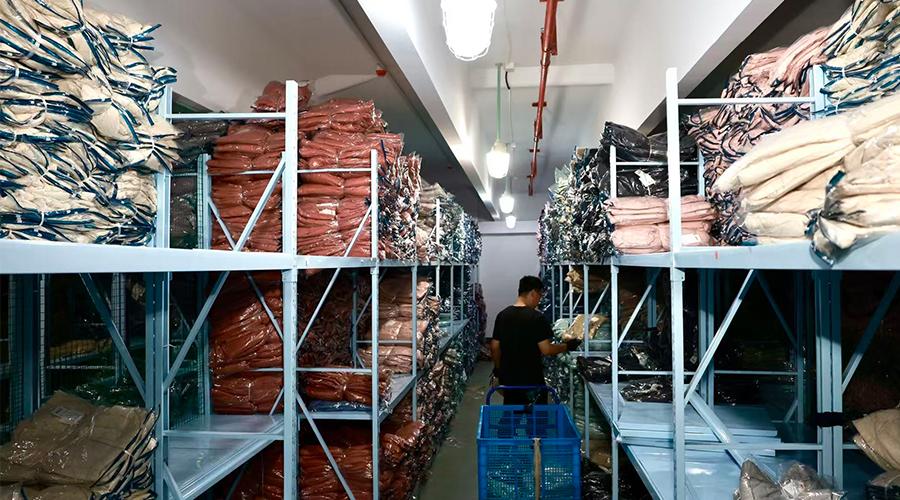
A Pinghu down jacket factory warehouse. Photo provided by interviewee.
For Pinduoduo, the growth of industrial belt brands has expanded its high-quality SKU pool. Robin Hood's average order value rose from 299 yuan to 500–600 yuan, while Aibunoshi specialized in lightweight jackets, optimizing the platform's product mix and shedding its "low-price, low-quality" image to reinforce its "source of authentic goods" reputation.
On the user side, more high-quality, cost-effective products cater to third- and fourth-tier city demand, with celebrity endorsements attracting Gen Z users and injecting fresh traffic.
Ecosystem-wise, Pinghu's success story inspires more industrial belt merchants to join, creating a virtuous cycle. Pinduoduo is transforming from a "merchandise platform" into an "industrial service provider," escaping the red ocean of traffic competition.
The hundred-billion-level supply-side revolution extends far beyond Pinduoduo itself. Acting as a 'catfish' thrown into the e-commerce industry, it forces peers to shift from 'traffic competition' to 'value competition.' As more platforms focus on empowering industrial belts, brand incubation, and supply chain optimization, the ultimate beneficiaries will be the overall competitiveness of China's manufacturing sector and the core demand of hundreds of millions of consumers for 'high-quality and cost-effective' products.
So, what does the future that Pinduoduo is betting on actually look like?
As Chen Lei, Chairman and Co-CEO of Pinduoduo Group, said, looking ahead from the 10th anniversary milestone, the company will focus on its core e-commerce business and move toward the next decade of 'Costco + Disney.' The core of this positioning is precisely the ultimate goal of the hundred-billion-level support: Costco's extreme cost-effectiveness stems from supply chain optimization that directly connects industrial belts with consumers; Disney's joy and resonance come from the storytelling power and innovation of high-quality brands—both of which rely on continuous deep cultivation of the supply side.
When Weihai's 'first fishing rod for young people,' Zhaotong's 'special-flavor potato chips,' and Pinghu's 'four-season down jackets' become part of the platform ecosystem, the blueprint for 'Costco + Disney' gains solid support.
What's even more promising is that this revolution is extending globally. With Temu's rapid overseas expansion, the Chinese industrial belt brands nurtured through Pinduoduo's hundred-billion-level support are using this channel to go global.
Recalling the story of Lego: the rebirth of a century-old brand began with a boundary-breaking 'imagination revolution.' Today, what Pinduoduo has sown with its hundred-billion-dollar investment is not just new rules for the e-commerce ecosystem but also 'century-old seeds' for Chinese industrial belt brands. As more merchants transition from 'contract manufacturing' to 'original design' and from 'regional brands' to 'global brands,' the innovators who grew alongside Pinduoduo may eventually become the next 'Lego,' writing a new chapter for China's manufacturing industry in the vast expanse of the global market.
And Pinduoduo, the 'barrier-breaker,' has also completed its most profound transformation through this bet on the new era.

